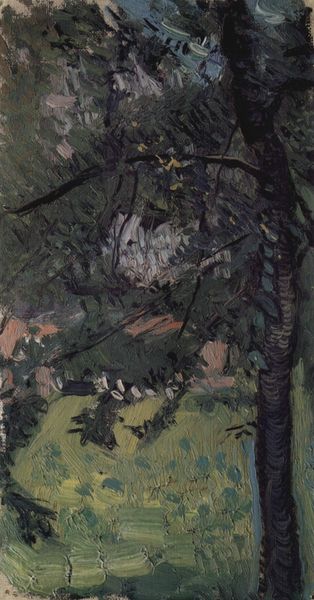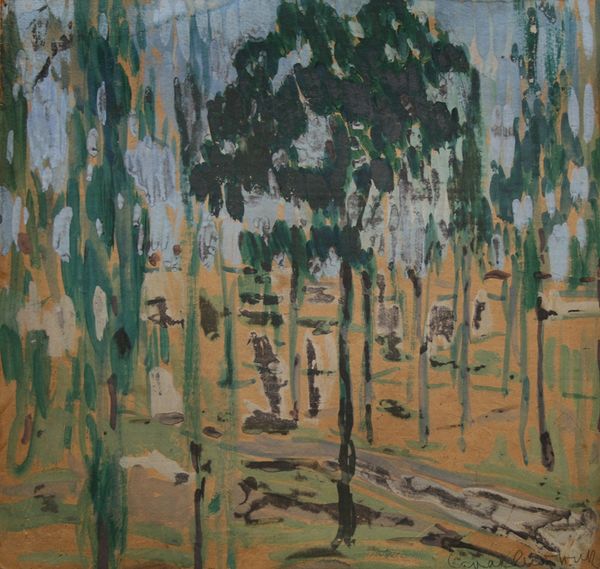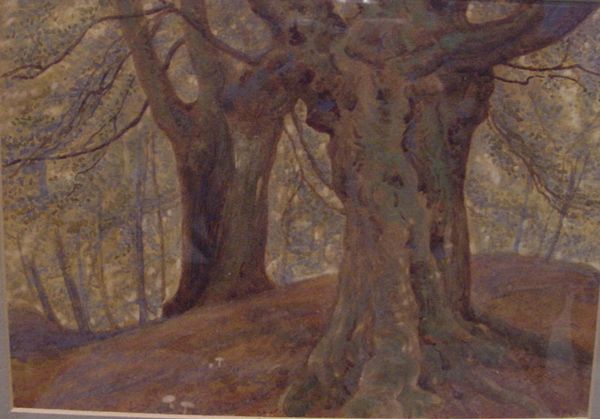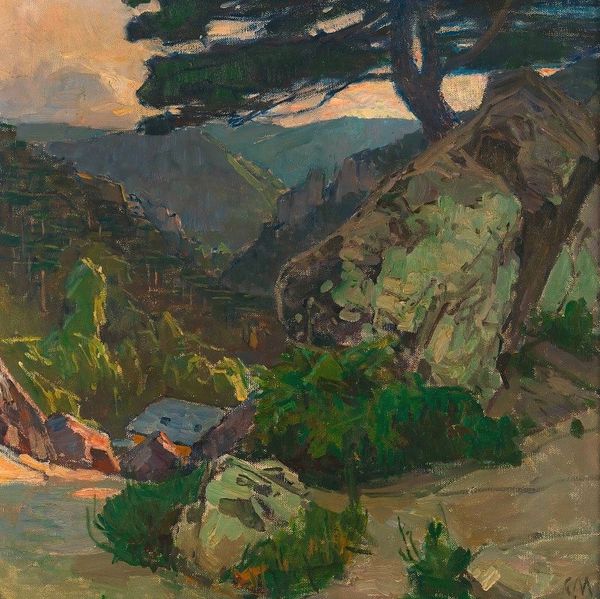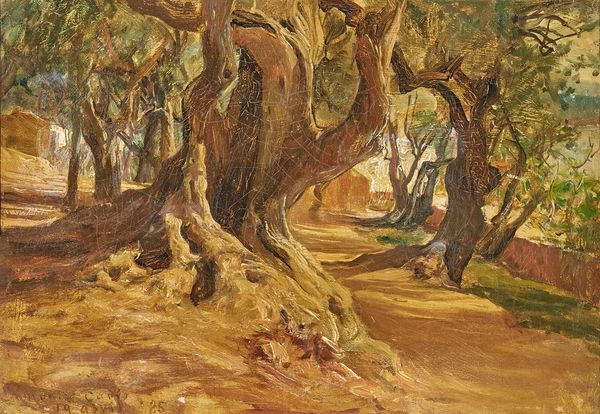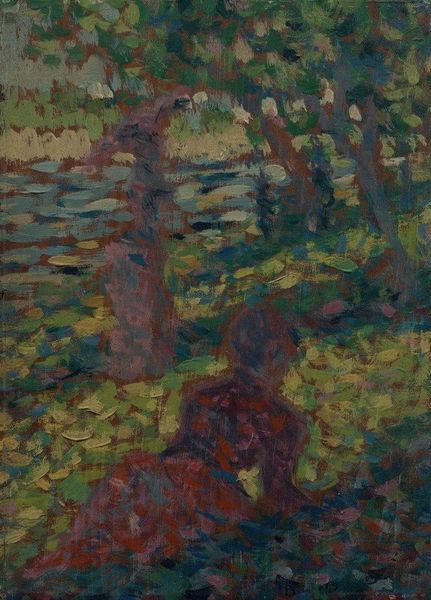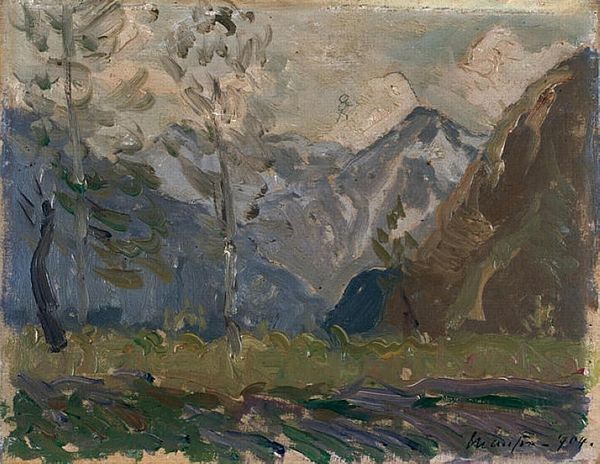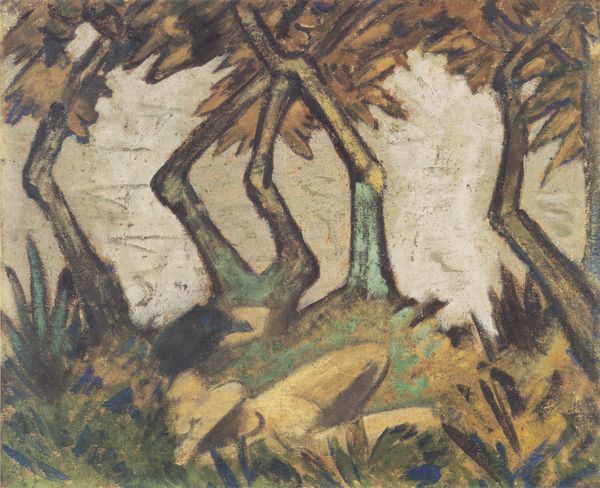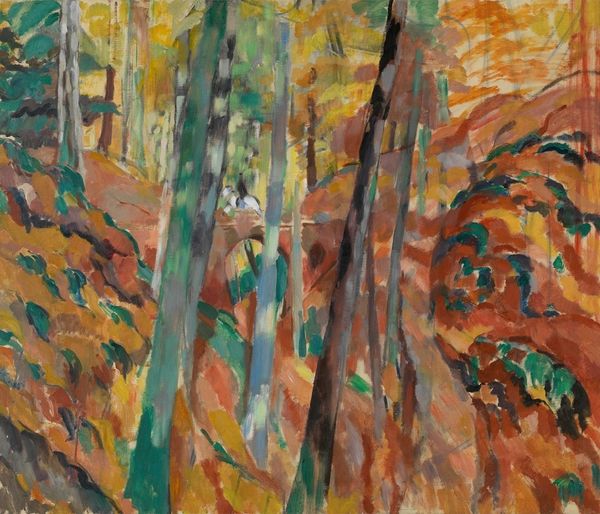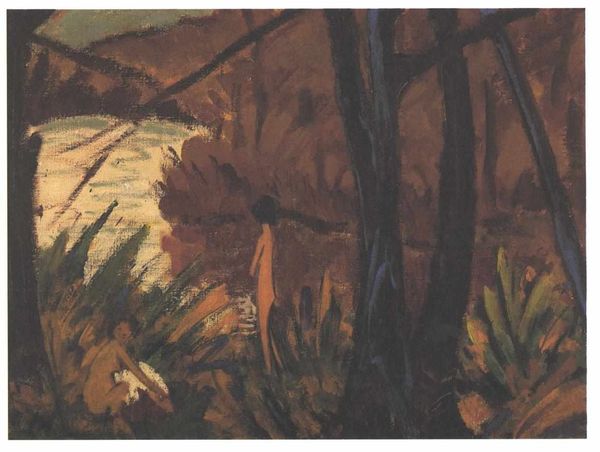
Copyright: Public domain
Georges Lacombe painted this oil on canvas, ‘Pines on the Shore’ at the end of the nineteenth century. Painted in France, this naturalistic scene reflects the symbolist style of the time. Rather than directly represent the landscape, artists like Lacombe used the external world to explore the artists’ internal, spiritual world. Synthetism involved simplifying forms and intensifying colors to convey symbolic meaning. The flattened perspective and non-naturalistic colors place emphasis on the artist's subjective experience. At this time, France was undergoing significant social and political change, and many artists were looking for new ways to express their ideas. Symbolism allowed artists to explore complex themes, such as spirituality, sexuality, and death, in a way that was both personal and universal. To fully understand this artwork, scholars might look at Lacombe’s relationship to artists such as Gauguin, as well as the cultural debates that preoccupied intellectual circles in France at the time. By examining the social and institutional context in which art is made, we can gain a deeper appreciation for its meaning and significance.
Comments
No comments
Be the first to comment and join the conversation on the ultimate creative platform.

